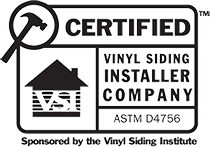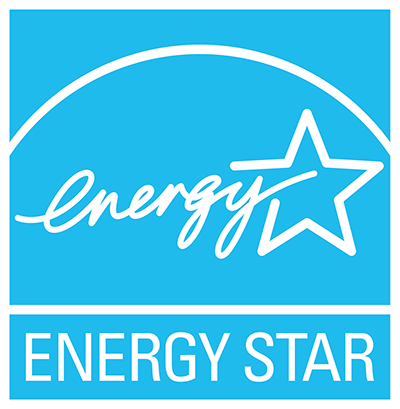If the complexity and cost of re-roofing your home’s structure with traditional shingle-type material make you feel overwhelmed, there is a solution. It’s called rolled roofing. What is rolled roofing you ask? Keep reading.
Rolled roofing, for instance, is the cheapest and easiest roofing material people can purchase. It is one of those roofs that many homeowners can easily install using some DIY methods.
While rolled roofing makes an easy and cheap install option, it does not have high resale value if you use is it for occupied structures. That is to say, and rolled roofing is ideal when you use it to install on unoccupied structures such as shops, sheds, garages, and various types of outbuildings.
Before you make up your mind to install rolled roofing for home improvement, it is important to find out some significant details about it.
What is Rolled Roofing?
Roll roofing is typically a mineral-surfaced roof product that comes in 100 sq. Ft rolls. You can find these rolls in many home improvement stores, as they are easy-to-obtain. One roll roofing role is approximately 36 ft long and 36 inches wide. That means one roll is equal to one large composite shingle.
Using roll roofing is not much different from using composite shingles. Both have vaguely similar processes as rolled roofing also uses oil-based asphalt products. However, when it comes to size, durability and affordability, roll roofing is different. Simply put, rolled roof is larger, thinner, less durable, and cheaper as compared to asphalt. It is installed horizontally using long strips.
Composite shingles are stronger and safer than rolled roof. They are less susceptible to cracking and tearing because they distribute stress across the area of moving parts. However, rolled roofing is extremely good to use as supplements to make roofing materials. Saturated felt is just one example. It is a builders-grade felt roofer impregnate with asphalt to use as underlayment material.
Best Use of Rolled Roofing
- As mentioned earlier, roll roofing is mainly used for non -occupied structures. That means the product is useful for making functional structures such as potting sheds, outdoor roofs structures, work sheds, garages, shops, barns, tree houses, and outbuildings.
- Rolled roof product is also suitable for low-sloped roofs. That means if your property has a roof pitch that declines 1 inch vertically and 12 inches horizontally, using a rolled roof is a good idea. Make sure you use concealed nailing for fastening to make it long lasting.
Types of Rolled Roofing (based on Material)
You can divide rolled roofing into various types depending on the material it is made of.
Some of the roofing types available
- Rubber Rolled Roofing
This is one of the common kinds of this roofing type and is used widely among roofing materials. It is an extremely budget-friendly option as it is prepared with common materials like sawdust, slate dust, and recycled tires.
You can install rubber roofing easily by overlapping sheets on your flat roofs. You can also find rubber roofing in shingles that are similar to the simple slate tiles. Besides that, rubber roofing is durable, cheap, and easy-to-maintain.
- EPDM Rolled Roofing
EPDM roofing is also called rubber membrane roofing. It is made with some inexpensive recycled rubber material that makes it extremely lightweight and durable. If you follow proper roof maintenance, EPDM roofing can last up to twenty years.
Like rubber roofing, this roofing type is easily installable. If you choose this material for flooring, there is no need to use any additional material and reinforcement. The adhesive seams are what make EPDM flooring leak-free material.
- Thermoplastic Polyolefin (TPO) Roofing
Because of its high durability and low cost, TPO roofing is gaining more popularity as compared to other roofing types. TPO is mainly a combination of polypropylene and ethylene-propylene. As manufacturing techniques and quality of TPO roofing may vary, it is important to choose a reliable home improvement store to buy it.
TPO rolled roofing is not only cost-effective but also cheaper as compared to EPDM roofing. In addition, if you choose white color TPO rolled roofing, it provides excellent heat resistance. It can stop heat buildup in your house. Not only this, this type of rolled rolling is corrosion resistant and prevents mildew and algae.
- Bitumen Rolled Roofing
This is a form of asphalt roofing. It is a recent addition in the roofing market. It comes in two forms called self-adhesive and cold adhesive. The materials used in bitumen roofing are amalgamated together. The longevity it provides is what sets it apart from other types of roofing. If you maintain bitumen roofing properly, it does not wear off for years.
Benefits of Rolled Roofing
- Rolled is the most budget-friendly roofing material. Its price is lower than composite shingles.
- The product is undeniably the best choice to cover low-decline roofs. Using hammered-down rolled if you have a flat roof may lead to leakage.
- Roofing comes off quickly. All you need is to roll out the square of the surface from the one end. Shingles, on the other hand, takes hours, as you need to remove shingles one by one.
- Rolled roof is easier to transport. Unlike composite shingles, which are unwieldy and heavy, rolled weighs not more than 75 pounds and comes tightly sealed and rolled up. That means if you are a DIY pro, you do not need heavy cranes to move rolled roofing. You can even place these rolls all by yourself without using any heavy machinery.
- Roofing is adaptable as you can cut them into 12 to 36-inch strips to make ridges or 9 inches to make rakes.
- If you find removing shingles on your roof a daunting task, you can re-roof roofing over the existing roof. However, you need to remove gravel, slab, and other waste and debris from your roof before re-roofing to prevent puncturing.
Bottom Line
Rolled roofing is gaining popularity because of its easy installation, attractive designs, and procedures. It is extremely cost-effective when you compare it with traditional roofing options. Perfect for flat roofs, roofing has various types and is an ideal option for non-occupied structure.












